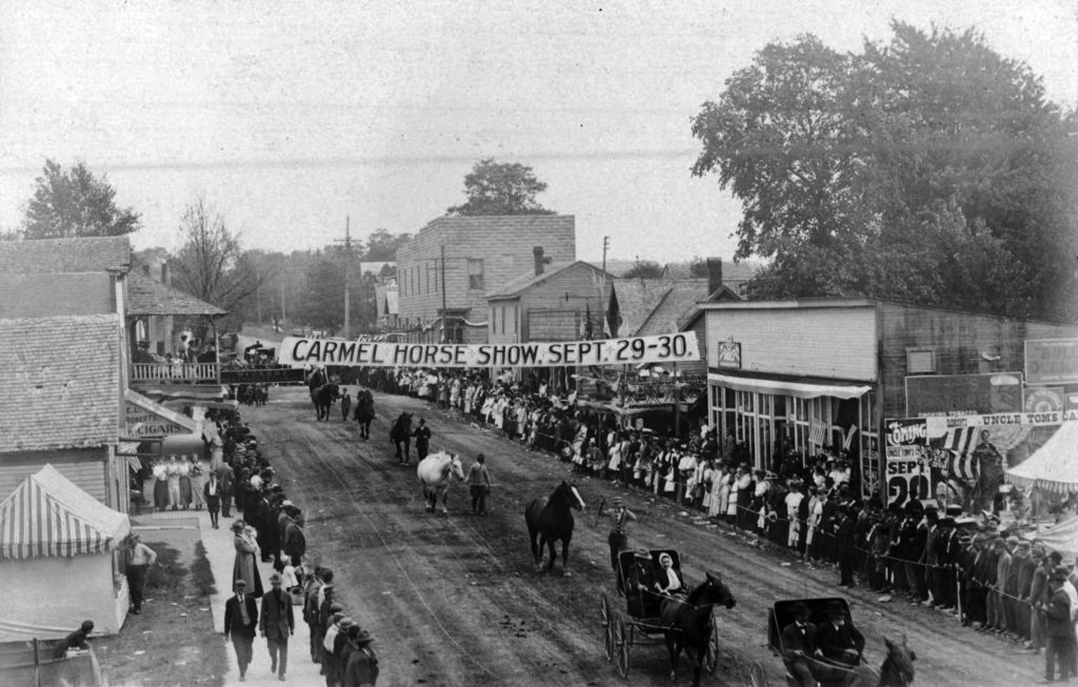
Carmel Clay Historical Society historian Andrew Wright had been eager to explore the period of growth between 1890 and 1910 that transformed Carmel.
“It was an exciting era and has been on the list to research for quite some time,” Wright said.
“Stories from the Boom Years” was recently released and is available for purchase at CCHS’s Monon Depot Museum.
Wright’s book is a collection of stories, including the gas explosion in 1904, the discovery of the flowing well, stories from the Carmel Horse Show, temperance and bootlegged liquor, among others.
“The first boom was not much of a boom,” Wright said. “Many towns grew into cities seemingly overnight during the gas booms. Carmel was on the edge of the gas field. The wells weren’t as strong as those in other parts of the county, and the population was too small to attract factories, so the town grew very little. It may have been to Carmel’s benefit in the long run as the town had gas long after other towns depleted their gas fields. The population boom happened after the turn of the 20th century. “
In 1900, Carmel was seventh in Hamilton County in population behind Noblesville, Sheridan, Cicero, Arcadia, Atlanta and Westfield. Wright said starting in 1901 a succession of advancements in technology and infrastructure connected Carmel to the wider world.
Between 1901 and 1903, Carmel got Rural Free Delivery of mail, local and long-distance telephone service, electricity and the interurban railroad.
Carmel was still seventh in terms of county population in 1910, but its growth far exceeded the other towns. Two of the towns saw growth under 6 percent, and four saw a decrease in population. However, Carmel grew 25.7 percent from 498 residents in 1900 to 626 in 1910.
“The interurban was an electric streetcar line that allowed people to live in Carmel and commute to work in Indianapolis,” Wright said. “The population seemed to grow overnight, and the culture began to change in town. Carmel had always been a dry town, but people begin to smuggle alcohol in on the interurban. There was tension between the temperance people and those who didn’t think it was a big deal. At the same time, there was a group called the Civic Pride Club that snuck around at night and tacked up posters on buildings and left pamphlets on doorsteps that ridiculed residents for their lack of refinement and for not keeping their yards tidy.”
Wright said things were tense, but there were positives, too.
Edward Collins, a physician who retired early and became a farmer, created a garden club for children that became extremely popular and inspired residents to beautify Carmel.
“He accomplished with kindness what the Civic Pride Club had failed to do with spite,” Wright said.
In 1908, Henry Roberts, editor of the Carmel Standard and salesman for an Indianapolis textile shop, led an effort to hold a horse show in a street festival. From 1908 to 1916, the Carmel Horse Show brought thousands of people into town.
“It was the highlight event each year, a holiday, of sorts, for Carmel residents,” Wright said.
"book" - Google News
April 26, 2021 at 02:52AM
https://ift.tt/3sS6baI
New Carmel Clay Historical Society book sheds light on Carmel’s boom years • Current Publishing - Current in Carmel
"book" - Google News
https://ift.tt/2Yv0xQn
https://ift.tt/2zJxCxA
Bagikan Berita Ini














0 Response to "New Carmel Clay Historical Society book sheds light on Carmel’s boom years • Current Publishing - Current in Carmel"
Post a Comment